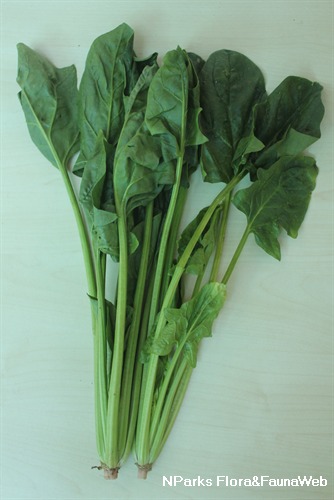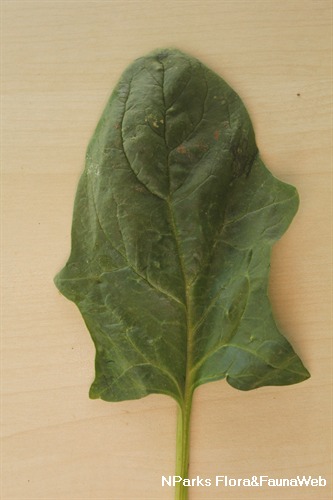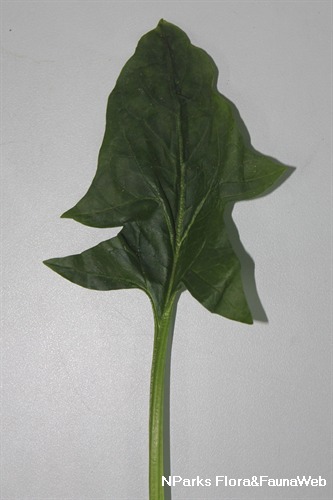
Name
Classifications and Characteristics
| Plant Division | Angiosperms (Flowering Seed Plants) |
|---|---|
| Plant Growth Form | Herbaceous Plant |
| Mode of Nutrition | Autotrophic |
Biogeography
| Native Distribution | Southwest Asia |
|---|---|
| Native Habitat | Terrestrial |
| Preferred Climate Zone | Temperate |
| Local Conservation Status | Non-native |
Description and Ethnobotany
| Growth Form | Annual herb up to 0.3 m tall. |
|---|---|
| Foliage | Hairless leaves are hastate to ovate with long petioles. They are arranged in erect, basal clumps. |
| Flowers | Male flowers are composed of 4 petal-like structures with sepals and petals indistinguishable. |
| Fruit | One-seeded, indehiscent fruits are known as utricles. They are brown and egg-shaped to approximately round, but slightly flattened (2.5 mm wide). |
| Cultivation | This species prefers cooler temperatures, being grown mainly in the highlands or hilly areas of tropical Asia. It is not likely to grow well in Singapore, because high temperatures promote early flowering which results in leaves withering. |
| Ethnobotanical Uses | Edible Plant Parts : Edible Leaves Food (Fruit or Vegetable): Leaves are rich in Vitamin A, B, C, and iron. Spinach may be eaten raw in salads or cooked in a variety of methods, such as stir frying and steaming. |
Landscaping Features
| Thematic Landscaping | Economic Garden |
|---|
Plant Care and Propagation
| Light Preference | Full Sun |
|---|---|
| Water Preference | Moderate Water |
| Plant Growth Rate | Fast |
| Rootzone Tolerance | Moist Soils, Well-Drained Soils, Fertile Loamy Soils |
Foliar
| Mature Foliage Colour(s) | Green |
|---|
Floral (Angiosperm)
| Flower & Plant Sexuality | Unisexual Flowers |
| Flower Colour(s) Remarks | Greenish Yellow |
|---|
Fruit, Seed and Spore
| Mature Fruit Colour(s) | Brown |
|---|---|
| Fruit Classification | Simple Fruit |
| Fruit Type | Indehiscent Dry Fruit , Utricle |
Image Repository
Others
| Master ID | 32128 |
|---|---|
| Species ID | 6534 |
| Flora Disclaimer | The information in this website has been compiled from reliable sources, such as reference works on medicinal plants. It is not a substitute for medical advice or treatment and NParks does not purport to provide any medical advice. Readers should always consult his/her physician before using or consuming a plant for medicinal purposes. |


